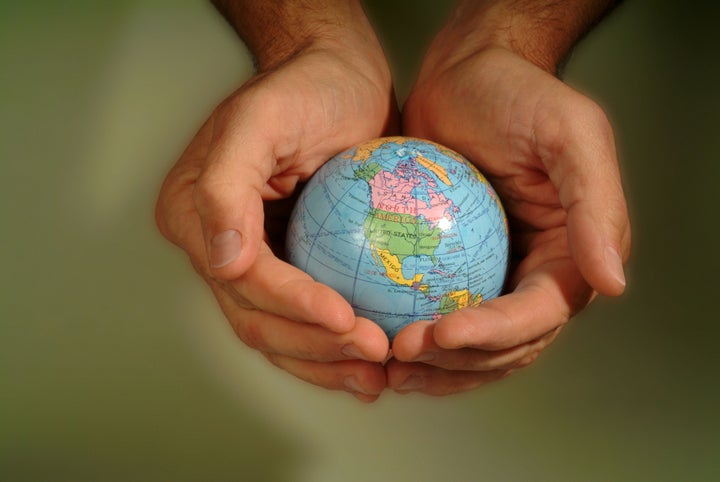
Think of Rio+20 as cinema. In its simplest black and white, small screen format, it was unsatisfying. Government negotiators failed to reach any agreements of note. But, in color, on the large screen, with your 3D glasses on, it was much more. Creative leaders, impatient with the formal process, from businesses, individual governments, NGOs, communities, and people's movements banded together at Rio in thousands of ways to catalyze action outside the multilateral process.
Some of their committed actions are clearly meaningful. Here a few of my favorites:
- Eight development banks committed to grant and lend $175 billion for sustainable low carbon transportation by 2020;
- Large corporations, including Unilever, Tesco, and J&J, as part of an innovative business alliance, called the Consumer Goods Forum, committed to end deforestation in their beef, soy, paper, and palm oil supply chains by 2020;
- The United Arab Emirates committed $350 million to the newly established International Renewable Energy Agency for a finance facility that IRENA will use to develop renewable energy projects;
- Microsoft committed to making all of its business operations carbon neutral by 2013; Cities inside Mayor Bloomberg's C40 have committed to a gigaton of carbon emission reductions;
- These cities also committed to establishing a monitoring mechanism and publishing an annual report card;
- A group headed by Richard Branson called the Carbon War Room committed to helping Aruba wean itself from fossil fuels by 2020;
- Norway committed to spend $140 million over five years in Ethiopia and Kenya to finance clean energy development;
- The UK will now mandate GHG emissions reporting by the 1800 largest companies on the London stock exchange; and
- Philips will increase the energy efficiency of its electric products by 50 percent by 2015.
There were also commitments to create huge marine sanctuaries in Australia and the Maldives, agreements to deliver clean cook stoves and solar lanterns for millions of people in Africa and Asia, compacts by businesses to manage water resources, and promises by business schools to teach sustainability.
These are serious actions by committed people helping to create a bridge to concerted global action and they are to be admired and supported, and also broadly emulated.
The untold story of Rio is that the UN and the Brazilians knew long in advance that the formal black and white multilateral process was doomed to failure at Rio so they opted for a Plan B to lift up the work of a broader, more colorful array of alternative leaders.
Forty thousand people came to Rio this time. Less than a quarter of these were government delegates. The rest were meeting in side rooms and alternative venues spread out across Rio hammering out their own agreements and announcing their intentions to act on their own. The 4,000 media seemed to miss a lot of this, mostly staying in their dedicated press area or in the large official meeting rooms.
Many of the commitments noted above resulted from year long efforts led all over the planet by a diverse array of dedicated supporting actors working off the main stage. Those efforts fed on deep concerns about global climate change and the harms people across the planet are already feeling.
The UN and the Brazilian Foreign Ministry are to be congratulated for the deliberate way they created space for these other actors at Rio. The possibility of participation encouraged all of the thousands of other efforts. For some of the most organized and better funded alternative efforts, Rio also afforded a chance to attract media attention and help. This then led to a competition by individual governments, firms and large NGOs to create more and more meaningful commitments. In one measure of the breadth of side bar commitments, the UN has counted $513 billion worth of commitments made at Rio+20.
Some of these commitments will prove to be insignificant. Others will prove to be empty promises. Many, though, have a chance to succeed, show the path forward for others, and also buy some time for the planet until a truly meaningful government process can be created.
Former President of Costa Rica, José María Figueres, made one of the most interesting recommendations of all at Rio; he said at one of the final official press conferences that if governments would replace negotiators over 45 years of age and make sure that half were women with children, an agreement on climate change could be hammered out in a year. Clearly irritated with what he called the 'no-gotiators,' he urged the world to support more unofficial commitments, to monitor and support them, and to see them as an essential bridge to necessary official action.
For the rest of us, we'll need to put the little black and white television set in the closet, and keep our 3D glasses on to watch and support all the actors on the multiplex of side stages churning out creative approaches governments will be able to learn from. Simultaneously we will need to demand that our governments change their approach and get serious. Time is short.